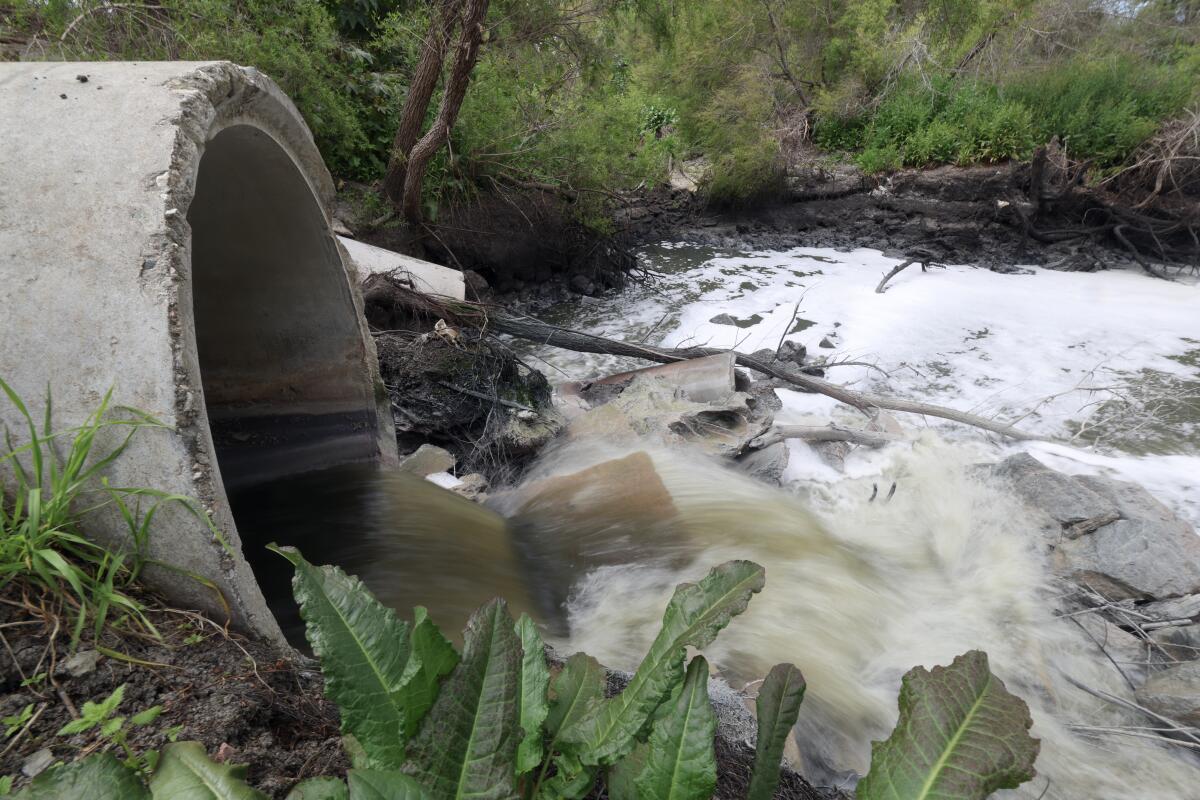Researchers have discovered that pollution within the Tijuana River, which carries uncooked sewage and industrial waste from Tijuana, are additionally turning up within the air alongside the coast close to the U.S.-Mexico border.
After gathering samples from air and water alongside the coast, scientists from UC San Diego decided that nice particles of assorted pollution from wastewater are within the air in elements of San Diego County. They discovered that sea spray aerosols comprise illicit medicine and drug byproducts that happen in human urine, in addition to chemical compounds from tires and private care merchandise.
The researchers mentioned the pollution are carried in wastewater and stormwater runoff, and turn out to be airborne in spray the place the river meets the crashing waves close to the border, and in addition possible enter the air from churning waters within the river itself.
Aerosol samples are collected at Imperial Seashore pier.
(Erik Jepsen / UC San Diego)
The findings present that the river, along with carrying water air pollution that has pressured seaside closures and odors which have plagued close by communities, is also releasing nice particles of air air pollution past what individuals can see or scent. The researchers mentioned, nonetheless, that the potential well being results of respiratory these pollution aren’t but recognized.
“Often the sewage crisis is considered a water issue — and it is — but we show that it’s in the air too,” mentioned Jonathan Slade, a co-author and affiliate professor of chemistry at UC San Diego. “This study points to it being an air quality issue, which requires more focus and more study in the future to understand the effects of exposure to these chemicals.”
The research, revealed Wednesday within the journal Science Advances, concerned testing air and airwater samples collected in 2020 at places together with the U.S.-Mexico border, Imperial Seashore and the Scripps Establishment of Oceanography in La Jolla.
The researchers used a compound known as benzoylecgonine, a byproduct of cocaine use present in urine, to hint the pollution to wastewater. Additionally they examined for cocaine and a few dozen chemical compounds present in wastewater and concrete runoff, together with methamphetamine, octinoxate from sunscreen and dibenzylamine from tires.
They discovered concentrations had been considerably increased within the air close to the river mouth on the border and Imperial Seashore than farther north alongside the coast on the Scripps Pier in La Jolla.
“Some of these compounds, we measured concentrations that are as high as what a worker would be exposed to at a wastewater treatment plant if they’re standing directly over an aeration tank,” Slade mentioned, “where it’s often recommended that you wear personal protective equipment like masks.”

Water from the Tijuana River flows from a pipe close to Saturn Boulevard in San Diego in April.
(Hayne Palmour IV / For The Occasions)
The analysis crew, which included scientists from UC San Diego and Scripps Establishment of Oceanography, wore respirators and protecting gear whereas gathering samples close to the Tijuana River.
“We see some of this stuff coming out at levels that can be concerning,” Slade mentioned. “But we don’t know the effects of chronic exposure, long-term exposures of people living in the South Bay region, breathing in this air on a daily basis for years or decades.”
Adam Cooper, the lead writer, mentioned the analysis is “one of the most comprehensive studies to date investigating water-to-air transfer of these pollutants.”
Different analysis is underway inspecting different forms of air air pollution from the Tijuana River, together with micro organism and different pathogens from sewage.
Kimberly Prather, a UC San Diego professor of atmospheric chemistry, has been researching air air pollution from the river for years.
“This is the No. 1 way that this pollution from the water is actually making its way into your body, even if you’re not at the beach,” Prather mentioned. “The beaches can be closed, but people are still breathing that air.”


